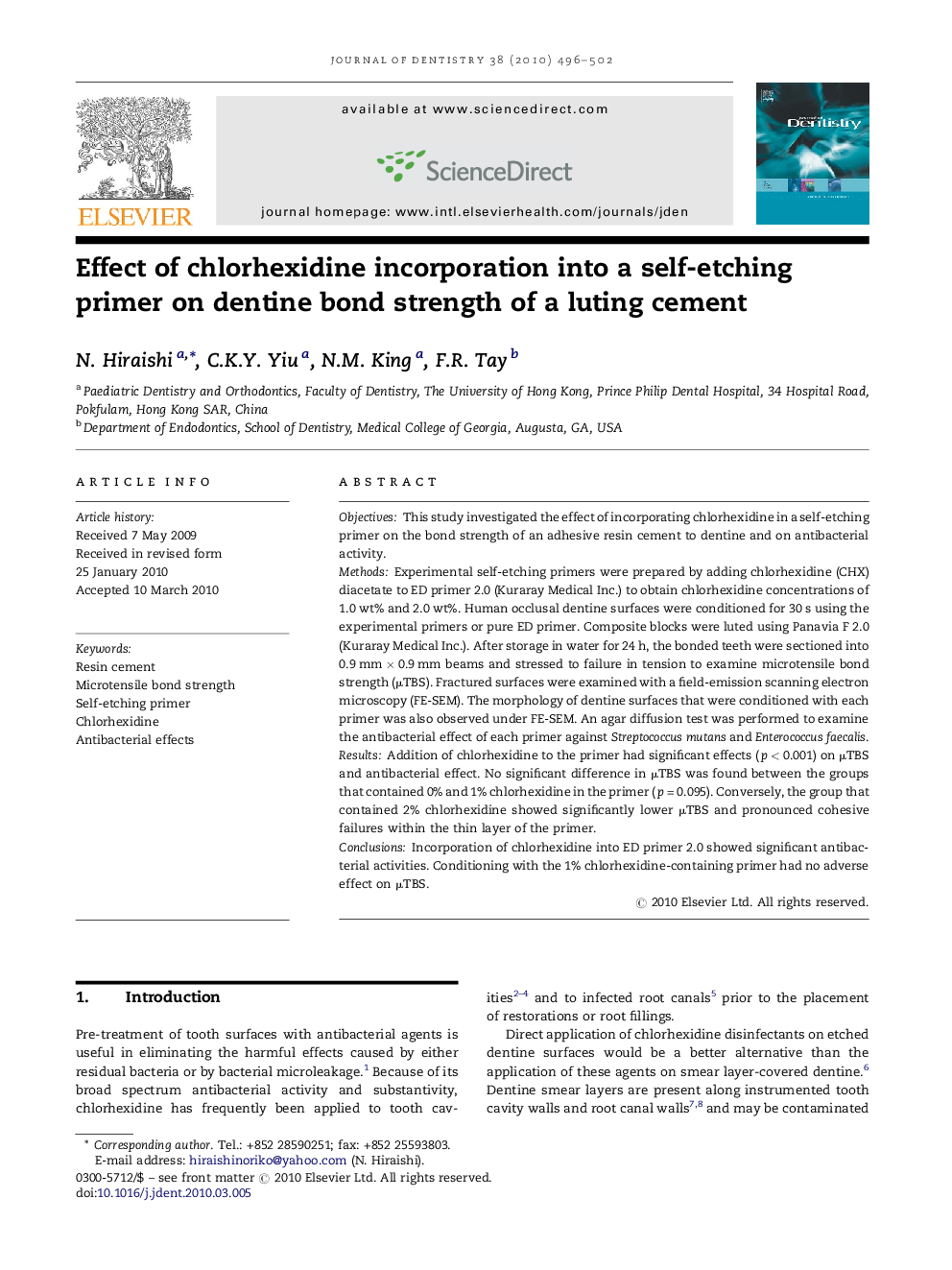| Article ID | Journal | Published Year | Pages | File Type |
|---|---|---|---|---|
| 3145384 | Journal of Dentistry | 2010 | 7 Pages |
ObjectivesThis study investigated the effect of incorporating chlorhexidine in a self-etching primer on the bond strength of an adhesive resin cement to dentine and on antibacterial activity.MethodsExperimental self-etching primers were prepared by adding chlorhexidine (CHX) diacetate to ED primer 2.0 (Kuraray Medical Inc.) to obtain chlorhexidine concentrations of 1.0 wt% and 2.0 wt%. Human occlusal dentine surfaces were conditioned for 30 s using the experimental primers or pure ED primer. Composite blocks were luted using Panavia F 2.0 (Kuraray Medical Inc.). After storage in water for 24 h, the bonded teeth were sectioned into 0.9 mm × 0.9 mm beams and stressed to failure in tension to examine microtensile bond strength (μTBS). Fractured surfaces were examined with a field-emission scanning electron microscopy (FE-SEM). The morphology of dentine surfaces that were conditioned with each primer was also observed under FE-SEM. An agar diffusion test was performed to examine the antibacterial effect of each primer against Streptococcus mutans and Enterococcus faecalis.ResultsAddition of chlorhexidine to the primer had significant effects (p < 0.001) on μTBS and antibacterial effect. No significant difference in μTBS was found between the groups that contained 0% and 1% chlorhexidine in the primer (p = 0.095). Conversely, the group that contained 2% chlorhexidine showed significantly lower μTBS and pronounced cohesive failures within the thin layer of the primer.ConclusionsIncorporation of chlorhexidine into ED primer 2.0 showed significant antibacterial activities. Conditioning with the 1% chlorhexidine-containing primer had no adverse effect on μTBS.
